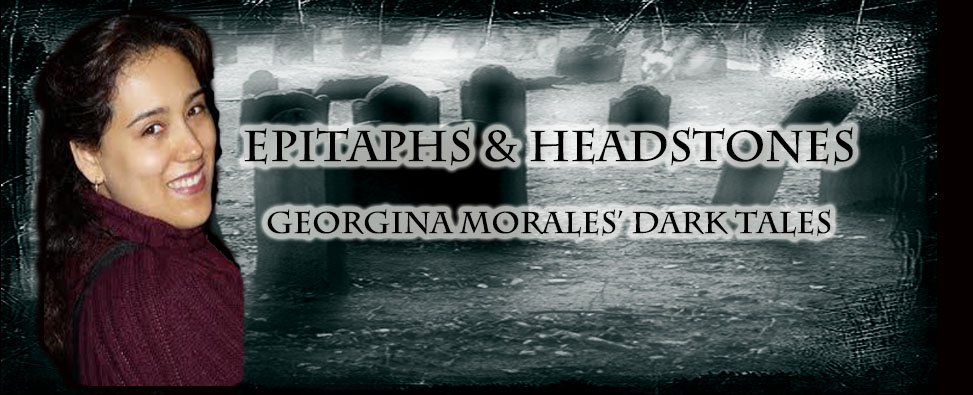Our last exploration into the darkest myths of the world will take us to the Scottish Islands, the Philippines, and Japan. This will also be your last chance to get your name into my Perry fedora (picture coming soon) for a chance to win an issue of the magazine every critic is hailing, Jamais Vu: Journal of Strange Among the Familiar.
My next and final Coffin Hop-related post will be on November 3rd, when I'll announce the lucky winner.
Enjoy safely of this, the most incredible, bloodiest of holidays. And remember to keep hopping!
NUCKELAVEE
 |
| By Boolengleng at DeviantArt |
According to Tammis, the Nuckelavee has a man's torso attached to a horse's back. The male torso has arms that reach the ground from his position and a 3-feet head that rolls back and forth. The equine body has fin-like appendages in its legs and a head with an enormous gapping mouth. In the centre of the animal's forehead, a single red eye burns like a flame. If that's not enough to give you nightmares, let me tell you about its skin, or lack thereof. Yes, the Nuckelavee has no skin. Instead, its black blood runs through yellow veins and its muscles are a pulsating mass.
Ok, the monster's scary. But what can it do, you ask?
The Nuckelavee's toxic breath can wilt crops and sicken livestock. Once, he was said to infect every horse in the island with a deadly disease as a punishment to the people for burning seaweed. Can you say "overreaction"? But it can be worse. If truly enraged, the Nuckelavee can bring forth plague, death to the cattle, and the destruction of the crops.
Its Achilles tendon? A deep aversion to fresh running water (hint: if you cross a river or lake, it'll stop following you!) And Mither O' the Sea. Mither O' the Sea is an ancient divinity that lives in the sea during summer, and the only being who can truly control the Nuckelavee. She's said to confine the monster during the summer months.
MANANANGGAL
This man-eating, blood-sucking nightmare is brought to you by the rich folklore of the Philippines. Often described as a female, the Manananggal has the ability to sever her upper torso and sprout huge bat wings. She then flies through the night skies, searching for sleeping, pregnant women to torment. Once she has selected her victim, and this is the really nasty part, the Manananggal uses her long, thin tongue to suck the heart out of the unborn fetus. Like an insect from hell.
While the monster's upper section is literally sucking the life out of a woman's belly, the lower torso is left immobile. This is the Manananggal's most vulnerable half. If sprinkled with salt or ash, or smeared with garlic, the creature won't be able to rejoin her two sections. When the upper torso is exposed to the sunrise, the Manananggal will die.
KASHA
A Kasha is a large, bipedal feline that can be as large or even larger than a human being. They are covered in hellish flames and are usually accompanied by lightning.
These beings tend to live among humans, disguised as ordinary cats or strays. It's only during funeral services that they reveal their true nature. If you were a bad, bad person, a Kasha will jump on top of your corpse, snatch it, and bring it to hell for punishment. Such is their grim task as messengers or servants of hell. Other times, they do it just for fun, as they enjoy of animating the corpses, turn them into puppets, or simply eating them.
Now, it's your turn. Which creature was your favourite of the series? Which one will give you nightmares? Remember, if you ever incorporate one of these into one of your books and/or stories and you make it big, you owe me at least half of your money and all of your fame.
Now go on, hop along.















